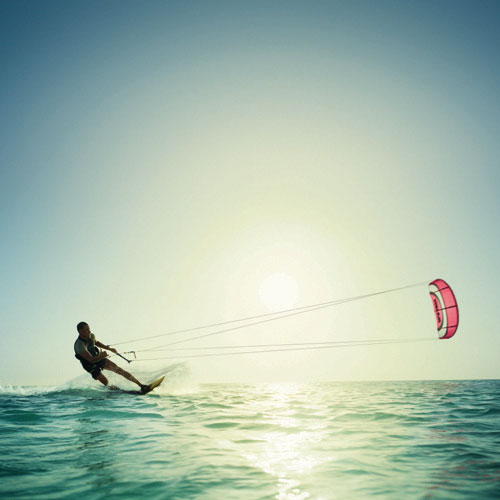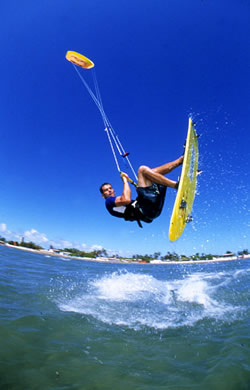
-
МјРЇСІИёСЖШИМі
-
 MINUTE TO WIN IT
MINUTE TO WIN IT 46,100
46,100 -
 Apple Eating Contest Game
Apple Eating Contest Game 33,492
33,492 -
 DEAL OR NO DEAL
DEAL OR NO DEAL 22,467
22,467 -
 rodeo masbatenio18,958
rodeo masbatenio18,958 -
 Luksong Lubid13,579
Luksong Lubid13,579 -
 Tumbang Preso11,677
Tumbang Preso11,677 -
 HULA HOOP10,974
HULA HOOP10,974 -
 BUNONG BRASO ( ARM WRESTLING)10,406
BUNONG BRASO ( ARM WRESTLING)10,406 -
 PALO SEBO10,361
PALO SEBO10,361 -
 Balot Eating Challenge (The Real One)10,348
Balot Eating Challenge (The Real One)10,348
KITE SURFING
Kitesurfing or kiteboarding is a surface water sport
combining aspects of wakeboarding, windsurfing,
surfing, paragliding, and gymnastics into one
extreme sport. A kitesurfer or kiteboarder
harnesses the power of the wind with a large
controllable power kite to be propelled across
the water on a kiteboard similar to a wakeboard
or a small surfboard, with or without foot-straps
or bindings.
The terms kiteboarding and kitesurfing are
interchangeable, although kiteboarding may also
refer to kite landboarding or kite snowboarding.
The patent covers, specifically, a water sport using
a floating board of a surf board type where a pilot
standing up on it is pulled by a wind catching
device of a parachute type tied to his harness
on a trapeze type belt. Although this patent did
not result in any commercial interest, Gijsbertus
Adrianus Panhuise could be considered as the
originator of KiteSurfing.
Used kites of increased size to propel carts
on land and ships on the water, using a
four-line control system - the same system
in common use today. Both carts and boats
were able to turn and sail upwind. The kites
could be flown for sustained periods.[4] The
intention was to establish kitepower as an
alternative to horsepower, partly to avoid the
hated "horse tax" that was levied at that time.[5]
In 1903, aviation pioneer Samuel Cody developed
"man-lifting kites" and succeeded in crossing the
English Channel in a small collapsible canvas
boat powered by a kite[6]
Kitesurfing became a mainstream sport with the
entry of key windsurfing manufacturers namely
Naish and Neil Pryde. Single direction boards
derived from windsurfing and surfing designs
became the dominant form of kiteboard. From 2001
onwards, twin-tip bi-directional boards became
more popular for most flat water riders, with
directional boards still in use for
surf conditions.
Kitesurfing in Boracay, Philippines
Kiteboarding can pose hazards to surfers, beachgoers,
bystanders and others on the water. Many problems
and dangers that may be encountered while learning
kiting can be avoided or minimized by taking professional
instruction through lesson centres. Kitesurfing schools
provide courses and lessons to teach skills including
kite launching, flying, landing, usage of the bar, lines
and safety devices.
A beginner can turn by stopping or sinking backwards
into the water,and then turning the kite in the opposites
direction and starting again. A 'heel turn jibe' is a
quicker,and more skillful turn that is executed by slowing
down, flattening the board, then reversing the board flat
on the water by bringing the rear foot around downwind
to eventually become the new leading foot. The direction
of the kite is then reversed, which swings the surfer's
path in a semi circle, centered on the kite. As the turn
ends, the kite is flown over to be in front of the
surfer again.
The more a kite board tracks upwind, the more
its leeward side must edge into the water to resist
lateral drag. Upwind riders adopt a similar stance
kite fliers onshore, who slide their feet forward in the
beach sand to brake the kite. The kite board's
center line is way off the track line, dramatically
reducing speed.
The traction force of the kite is partly transferred
to the rider via the harness loop attached to the
harness hook. When "hooked in" the rider uses muscle
strength to steer the kite and control the kite power
by pushing the bar in and out. When "unhooked" the
rider steers the kite using their arms with no depower,
which can be very strenuous.
Twin tip kiteboards (the majority of kiteboards) are
designed to be bidirectional. If the rider wants to start
the next tack only the kite's sailing direction must
be reversed. The "stern" of the board now becomes
the "bow", so the feet can be kept in the footstraps.
Since the windward edge of the board doesn't change
sides, the terms "jibing" or "tacking" are somewhat
of a misnomer.
Handling the kite can be largely taught on shore,
as kite boarding evolved from beach kiting. On the
water, recovery from falling is relatively easy (the kites,
especially the newest models, stay normally aloft to
pull the rider out of the water, with little effort) as is
changing tacks, even in strong wind.
A kite and kiteboard will fit in most vehicles. An average
rider may need two to three kites and one board to
ride in a wide range of wind strength.

- ЁЄ
- ЁЄ
- ЁЄSalapan Festival
- ЁЄEmpanada Festival (Batac City)
- ЁЄPADUL-ONG FESTIVAL
- ЁЄKaumahan Festival in Barili
- ЁЄKAGASANGAN FESTIVAL
- ЁЄLalin Festival in Asturias
- ЁЄTinabuay Festival
- ЁЄGayon Bicol Festival
- ЁЄPINYASAN FESTIVAL in CAMARINES
- ЁЄMAGAYON FESTIVAL
- ЁЄBANAUAN FESTIVAL (BARANGAY.GUA
- ЁЄThe Tuna Festival in Gensan
- ЁЄPINTOS FESTIVAL BOGO CITY, CEB



- ЁЄ
- ЁЄ
- ЁЄ
- ЁЄCEBU WESTOWN LAGOON
- ЁЄGREEN LAGOON, COMPOSTELA
- ЁЄCALLAO CAVE
- ЁЄMOUNT PINATUBO IN PHILIPPINES
- ЁЄBATAN ISLAND in Batanes.
- ЁЄCALAGUAS ISLAND, CAMARINES NOR
- ЁЄAGHO ISLAND
- ЁЄCARAMOAN ISLAND IN CAMARINES S
- ЁЄSAMBAWAN ISLAND
- ЁЄPLACES TO VISIT IN LANAO DEL N
- ЁЄPLACES TO VISIT IN ZAMBOANGA C
- ЁЄPlaces to visit in Rizal Provi













 ЧЪРкДхФФ ОпАЃЛѓДу ПРЧТ
ЧЪРкДхФФ ОпАЃЛѓДу ПРЧТ 11ГтПЌМг МвКёРкИИСЗ 1РЇ
11ГтПЌМг МвКёРкИИСЗ 1РЇ
 ГЛАд ИТДТ ОюЧаПј УЃБт
ГЛАд ИТДТ ОюЧаПј УЃБт
 ИЎОѓ ЧаБГ ЙцЙЎБт
ИЎОѓ ЧаБГ ЙцЙЎБт
 СжИЛПЁ ГЛАЁ ОЕ КёПыРК?
СжИЛПЁ ГЛАЁ ОЕ КёПыРК? УжАэАЁМККё РЬКЅЦЎ СёБтБт
УжАэАЁМККё РЬКЅЦЎ СёБтБт
 ЧіСіПЁМЕЕ ЧЪРкДхФФ!
ЧіСіПЁМЕЕ ЧЪРкДхФФ! ЧіСіПЁМ АЁДЩЧб
ЧіСіПЁМ АЁДЩЧб









 ЧЪРк ЦЏБо Ч§ХУ! ФСНУОюСі МКёНК
ЧЪРк ЦЏБо Ч§ХУ! ФСНУОюСі МКёНК



 АЁСЗПЌМіЗЮ ДйЧдАд ОзЦМКёЦМ
АЁСЗПЌМіЗЮ ДйЧдАд ОзЦМКёЦМ







































